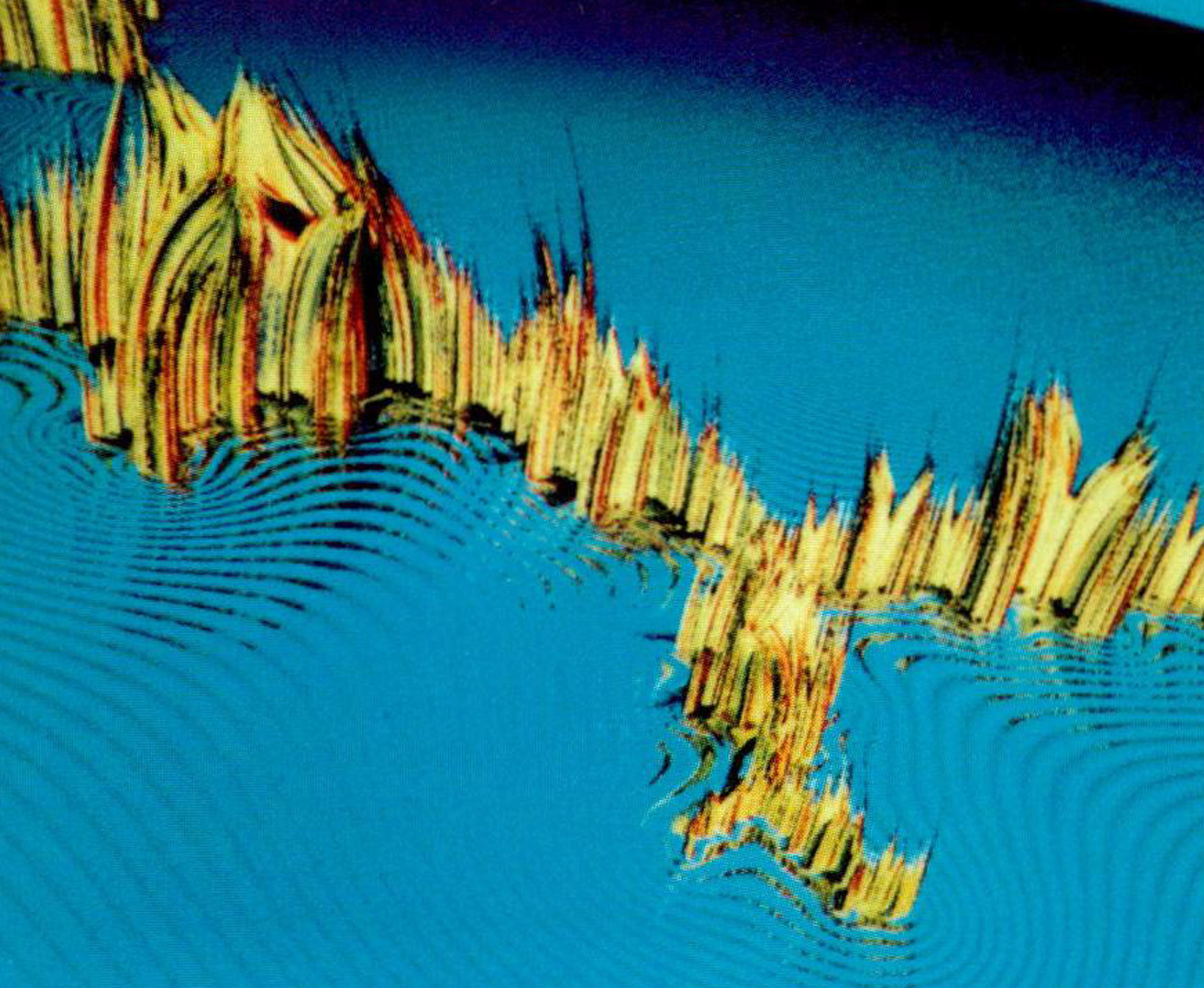“Ray tracing deterministic 3-D fractals” by Hart, Sandin and Kauffman
Conference:
Type(s):
Title:
- Ray tracing deterministic 3-D fractals
Presenter(s)/Author(s):
Abstract:
As shown in 1982, Julia sets of quadratic functions as well as many other deterministic fractals exist in spaces of higher dimensionality than the complex plane. Originally a boundary-tracking algorithm was used to view these structures but required a large amount of storage space to operate. By ray tracing these objects, the storage facilities of a graphics workstation frame buffer are sufficient. A short discussion of a specific set of 3-D deterministic fractals precedes a full description of a ray-tracing algorithm applied to these objects. A comparison with the boundary-tracking method and applications to other 3-D deterministic fractals are also included.
References:
1. Barnsley, M. F. Fractals Everywhere. Academic Press, New York, 1988.
2. Barr, A. H. Ray tracing deformed surfaces. Computer Graphics 20, 4 (1986), 287-296.
3. Blanchard, P. Disconnected Julia sets. Chaotic Dynamics and Frac~als (1986), 181-201.
4. Bouville, C. Bounding ellipsoids for ray-fractal intersection. Computer Graphics 19, 3 (1985), 45-51.
5. Branner, B., and Hubbard, J. H. The iteration of cubic polynomials, Part I: The global topology of the parameter space. Acta Mathema~ica 160, 3 ( 988), 43-20 .
6. Fisher, Y. The Science of Fractal Images. Springer-Verlag, New York, 1988, ch. Exploring the Mandelbrot Set, pp.-287-296.
7. Hamilton, W. R. Elements of Quaternions, 3rd ed. Vol. 1-2, Chelsea Publishing Company, New York, 1969.
8. Hart, J. C. Image Space Algorithms for Visualizing Quaterniou Julia Sets. Master’s thesis, University of Illinois at Chicago, 1989.
9. Kajiya, J. T. New techniques for ray tracing procedurally defined objects. A CM Transactions on Graphics 2, 3 (1983), 161-181.
10. Levoy, M. Display of surfaces from volume data. IEEE Computer Graphics and Applications 8, 3 (1988), 29-37.
11. Mandelbrot, B. B. Fractal aspects of the iteration of z ~ Az(1 – z) for complex A and z. Annals New York Academy of Sciences 357 (1980), 249-259.
12. Mandelbrot, B. B. The Fractal Geometry of Nature, 2nd ed. Freeman, San Francisco, 1982.
13. Milnor, J. Computers in Geometry and Topology. Marcel Dekker, Inc., 1989, ch. Selfsimilarity and hairiness in the Mandelbrot set, pp. 211-257.
14. Norton, V. A. Generation and rendering of geometric fractals in 3-D. Computer Graphics 16, 3 (1982), 61-67.
15. Norton, V. A. Julia sets in the quaternions. To appear in Computers and Graphics.
16. Norton, V. A., and Melton, E. A close encounter in the fourth dimension. SIGGRAPIt Video Review 39 (1988), 30.
17. Peitgen, H. The Science of Fractal Images. Springer-Verlag, New York, 1988, ch. Fantastic Deterministic Fractals, pp. 169-218.
18. Peitgen, H., and Richter, P.H. The Beauty of Fractals. Springer-Verlag, New York, 1986.
19. Prusinkiewicz, P., and Sandness, G. Koch curve as attractors and repellers. {EEE Computer Graphics and Applications 8, 6 (1988), 26-40.
20. Sutherland, I., Sproul, R., and Schumacker, R. A characterization of ten hidden-surface algorithms. Computing Surveys 6, 1 (1974), 1-55.




